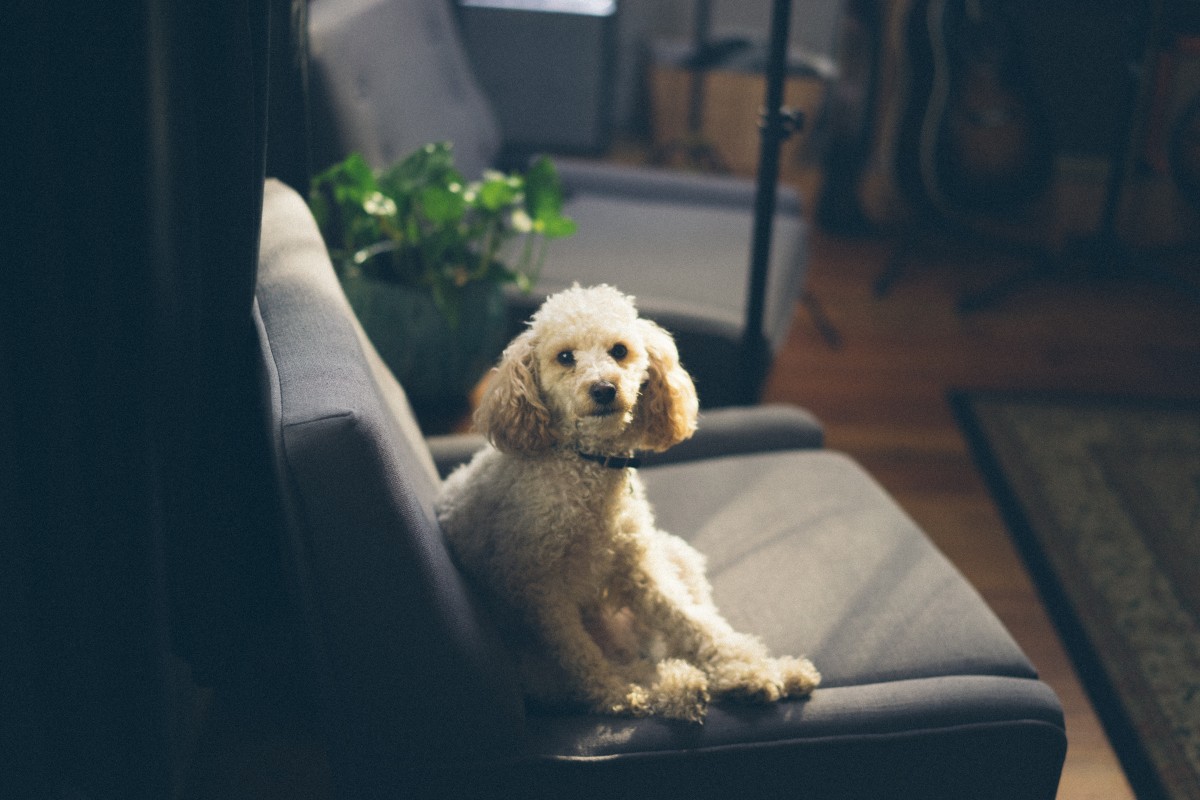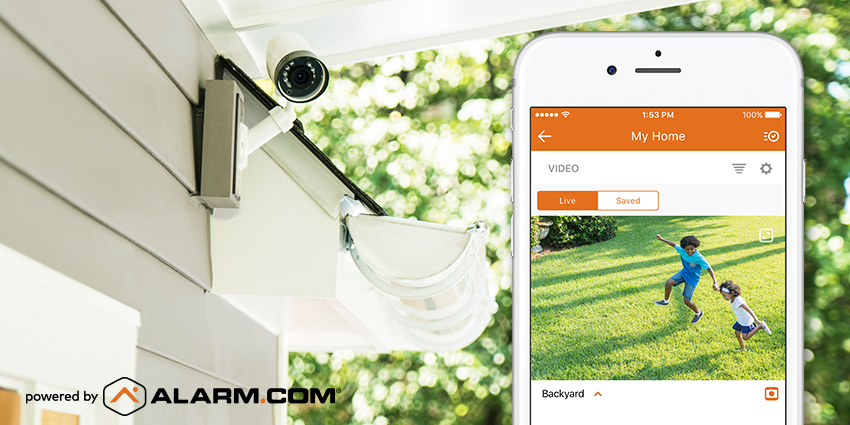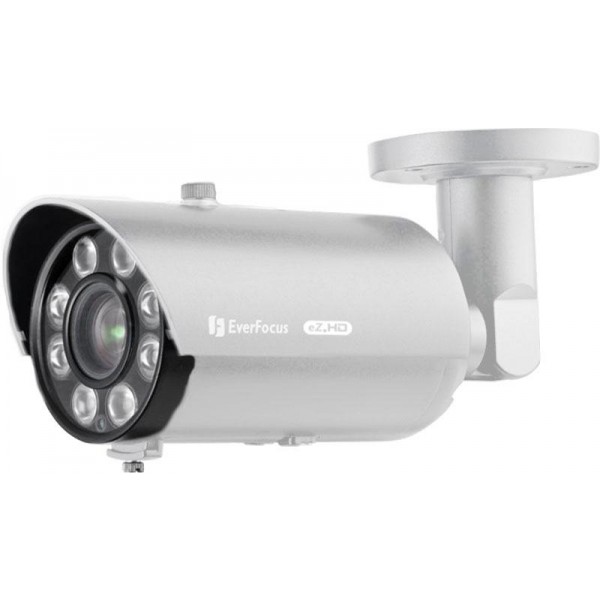More and more of our customers consider cameras an important part of their home security plan. As with many security-related products, however, entering the home surveillance market can prove frustrating. Customers often find themselves with countless camera choices, facing confusing industry jargon. And that’s just the beginning, because deciding where and how to install cameras can prove just as frustrating as looking through undecipherable technical documents to determine what type of camera to buy.
In our post on Smart Security System Design, we covered several choices customers have while designing a security system. In this post, we wish to do the same, but with a focus on cameras rather than burglar alarm sensors. We like to help customers through this process by asking the most important questions up front. Once we get these answers, we can start selecting equipment and installation locations. We’ll start this post by covering a few of the most basic design and functionality questions that we ask our home surveillance customers. From there, we’ll discuss the types of questions you must answer to choose a camera that suits your specific surveillance goals.
What Do You Wish to See, and Why?

While keeping track of pets in your home is important, cameras used for this task do not need to be as rugged or capture picture in as high detail as cameras used for more security-oriented purposes.
When customers call us for information on cameras, we always start by asking what they wish to see. The answer to this sets up everything that follows. Sometimes people call because they want to make sure their kids get home from school on time, or that their pets are not making trouble. Other customers call to install cameras that can read a license plate in their driveway. These two applications require far different equipment. For one, the first application is indoors while the second is outdoors. Additionally, the cameras used to monitor children coming home from school will not require as much detail as the license plate cameras. Designing a home surveillance system presents a nearly endless amount of options and variables. Answering this question provides a very important first step towards sorting through them.
How Much Recorded Video Do You Need?
The answer to this question hinges largely on the answer to your first question. Cameras installed to catch potential criminals generally need to capture more video than those installed for convenience or more simple monitoring purposes. We discussed the value of recorded video for catching burglars (or potential burglars) in our Yard and Driveway Security Tips. We generally need a dedicated recorder to provide any type of continuous recorded footage. If you want your cameras to capture footage around the clock, this is likely your best option. However, it is far from your only option.
Some customers only need motion-activated footage. This is especially true for homeowners who install cameras more for general surveillance than customers who install a home surveillance system to address specific, pressing security concerns. You can purchase cameras that record video to a cloud-based service upon detecting motion. This type of setup usually saves you 1-4 weeks of stored footage, often for a small monthly fee. Some cameras record motion-based clips to SD cards as well. While this option generally only stores 24-48 hours of footage, that’s all some customers need. Deciding what you want to see with your cameras and how much video you need goes a long way towards helping to design a system. Next, let’s look at options for viewing your cameras’ live and recorded video footage.
How Do You Wish to View Your Cameras?
Deciding how and where you wish to view your cameras will help determine your system’s design quite a bit. Some homeowners take it for granted that they will have the ability to use their phones to view their cameras. While we generally make this happen, other homeowners may feel uneasy about having their cameras on their network. After all, this does make it possible for hackers to view their cameras if proper security measures are not taken. Let’s take a look at the methods that homeowners use to view their cameras, and what they entail.
Local Viewing
We use the term “local viewing” when referencing methods used to watch your cameras directly and on site. This usually involves connecting cameras directly to a monitor. Many homeowners store a monitor right next to their recorder. However, if you wish to have a monitor in an easily accessible location, this could also leave your recorder vulnerable. In this case, you can install a CCTV monitor and run an HDMI cable to your recorder. (We certainly recommend having this done professionally if you don’t generally run wires in your house.) Still another method involves creating a connection between your recorder and your television. This allows you to switch between watching television and looking at your cameras with the touch of a button on your remote.

Wireless cameras, such as this one by Alarm.com, allow you to view your cameras on your smartphone without running a wire from your cameras to your network.
Remote Viewing
As you may have guessed, viewing your cameras remotely requires doing so through an internet connection. Just about any camera system we install has the proper technology to make this possible. Our hardwired camera systems generally come with a recorder that we can connect to your modem. Once completed, we can put the entire system online to view remotely through an app or laptop. Some cameras (especially those not wired to a recorder) connect to your network wirelessly. Manufacturers generally market these as “wireless cameras.” This often leads to some confusion since these cameras still generally wiring for power. However, they make for a good solution in installations where running wires from your network to your cameras locations isn’t an option.
If choosing between how you want to view your cameras proves difficult, you can also set up options for both. Installing both a monitor and a network connection for your cameras allows you quick and easy access to footage while at home, while also allowing for the prospect of remote viewing while on the road. Once you’ve answered these preliminary questions, it’s time to answer some specific questions about the cameras you wish to use.
What Type of Camera Should I Install?
Making the “nuts and bolts” decision of what type(s) of camera to install depends largely on when and why you wish to install your cameras in the first place. If you need your cameras to see well at night, you should consider installing cameras with infrared (or “IR”) illuminators that make recording video in very dark settings possible. If you install your cameras for security purposes, you’ll want as clear a picture as possible. While many cameras offer high-definition viewing, it may surprise you to find out that several cameras do not. On the other hand, several cameras offer recorded video with even more detail than standard high definition. This allows users to zoom in to a recorded video without causing the image to pixelate.

Many cameras, such as this one by Everfocus, have infrared LEDs that help it capture video at night. The LEDs are visible, circling the camera’s lens.
In addition to picture quality, the type of lens a cameras has also affects its versatility. Cameras with “varifocal” lenses allow you to adjust how closely they are zoomed even after installation. However, most cameras instead have “fixed” lenses, which means once you install them, what you see is what you get. You’ll also need to decide what type of technology you want your cameras to utilize. Most camera utilize either Internet Protocal (or “IP”) technology, while older cameras use analog technology. While IP cameras have been slowly phasing analog cameras out and offer better picture, you generally pay a premium for them. Our post on Analog vs. IP cameras gives you the complete rundown on the two most prevalent camera technologies available.
Putting Together a Complete Home Surveillance Plan
After reading this post, you should at least have an idea of the types of questions you need to answer to design a home surveillance system. Asking the right questions goes a long way towards a successful camera installation. As we pointed out in our post on DIY vs. Professional Camera Systems, talking to people who install cameras for a living often proves invaluable during this process. If you have any questions about anything in this post or home surveillance in general, please contact us. We provide free home site surveys to provide recommendations on camera types and locations. Together we can plan a camera system to help you keep an eye on what you care about most, and make your home as secure as possible.
Feature Photo Credit: Tekno Electro Solutions Pvt Ltd on Wikimedia Commons. Used under the CC BY-SA 3.0 License.
